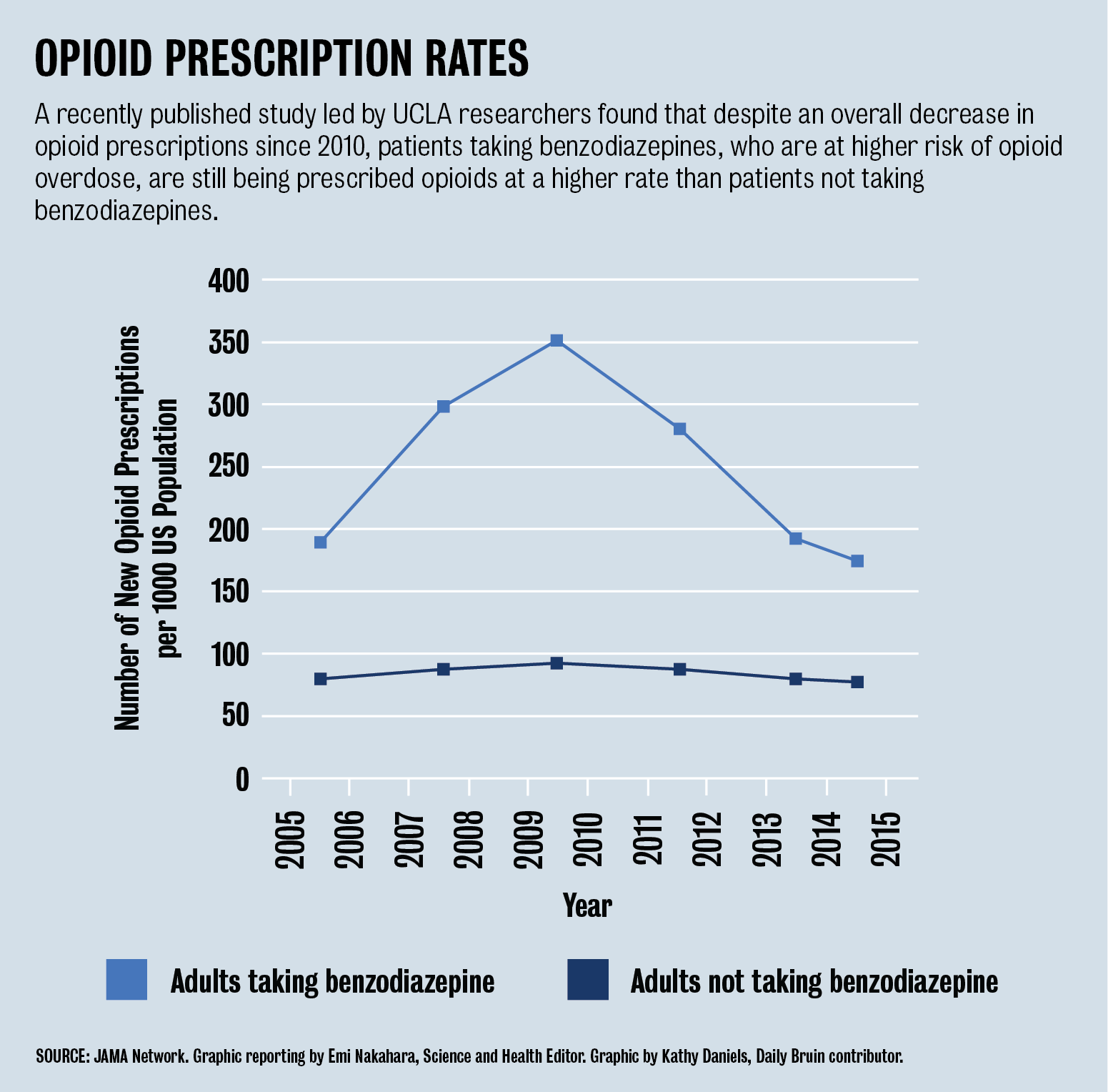Study links use of benzodiazepine drugs to greater opioid prescription

By Tabatha Lewis-Simó
April 18, 2018 12:43 a.m.
UCLA researchers found that patients who are at a heightened risk of opioid addiction and overdose are prescribed the drugs at a higher rate than other patients.
Patients who take benzodiazepines, which are used to treat anxiety, are four times more likely to become addicted to or overdose on opioids, according to a study published Thursday in Jama Psychiatry.
Researchers at the Ronald Reagan UCLA Medical Center and in other departments compared the rates of initial opioid prescription, or prescriptions made to patients who had never been given opioids before, between patients that had already been prescribed benzodiazepines and those that reported they were not concurrently taking benzodiazepines. The researchers found that, from 2005 to 2010, the number of initial opioid prescriptions for benzodiazepines users increased from 189 to 351 per 1,000 individuals versus a smaller increase from 78 to 93 per 1,000 individuals for non-benzodiazepine users. The study did not specify why benzodiazepine users were prescribed opioids more often than other patients.
Although the number of initial opioid prescriptions has decreased since 2010, the number of opioid-related deaths increased from seven per 100,000 individuals in 2010 to 11 per 100,000 individuals in 2015, according to the study.
The study also notes that it is still cheaper for individuals to purchase narcotics out of pocket than it is to pay for other treatments. For example, oxycodone, an opioid, costs approximately $18 per month, while generic diclofenac gel, a topical gel for pain relief, costs a minimum of $45 per month.
Joseph Ladapo, a physician at the Ronald Reagan UCLA Medical Center who co-authored the study, said he thinks patients and physicians should invest more in policies and treatment plans that involve fewer opioids.
“Getting (an opioid prescription) once is a risk factor for getting it again,” Ladapo said. “We don’t want people to suffer, but it’s also important to acknowledge the risk of taking the drugs in the first place.”
Ladapo said he thinks the reason opioid-related deaths have increased since 2010 even as the prescription rate has decreased is because patients have been seeking opioid prescriptions from multiple physicians or from illegal sources.
Ladapo said the rate at which opioids are prescribed has been less consistent than the rate of prescription for other treatments: For instance, physicians consistently prescribe antibiotics to treat bacterial infections since they are a generally accepted treatment. However, physicians appear to be less certain about when to prescribe opioids, as shown by the fluctuations in the number of opioid prescriptions in recent years, Ladapo said.
“We wanted to be a cautionary advisement for patients, who often don’t know about the increased risks, and doctors,” he said. “As a doctor, I think we are aware of these risks, but I think sometimes we underestimate them.”


